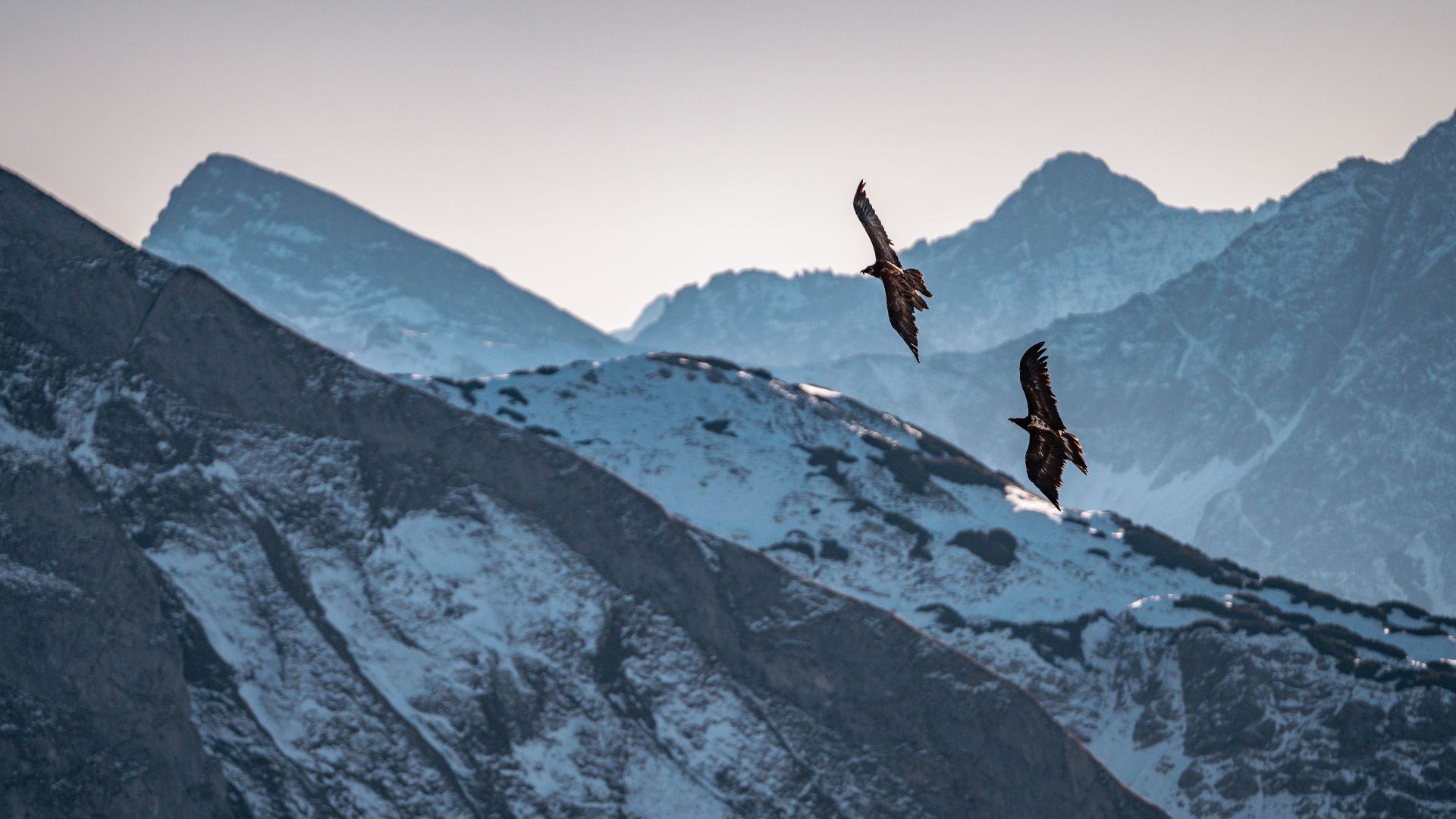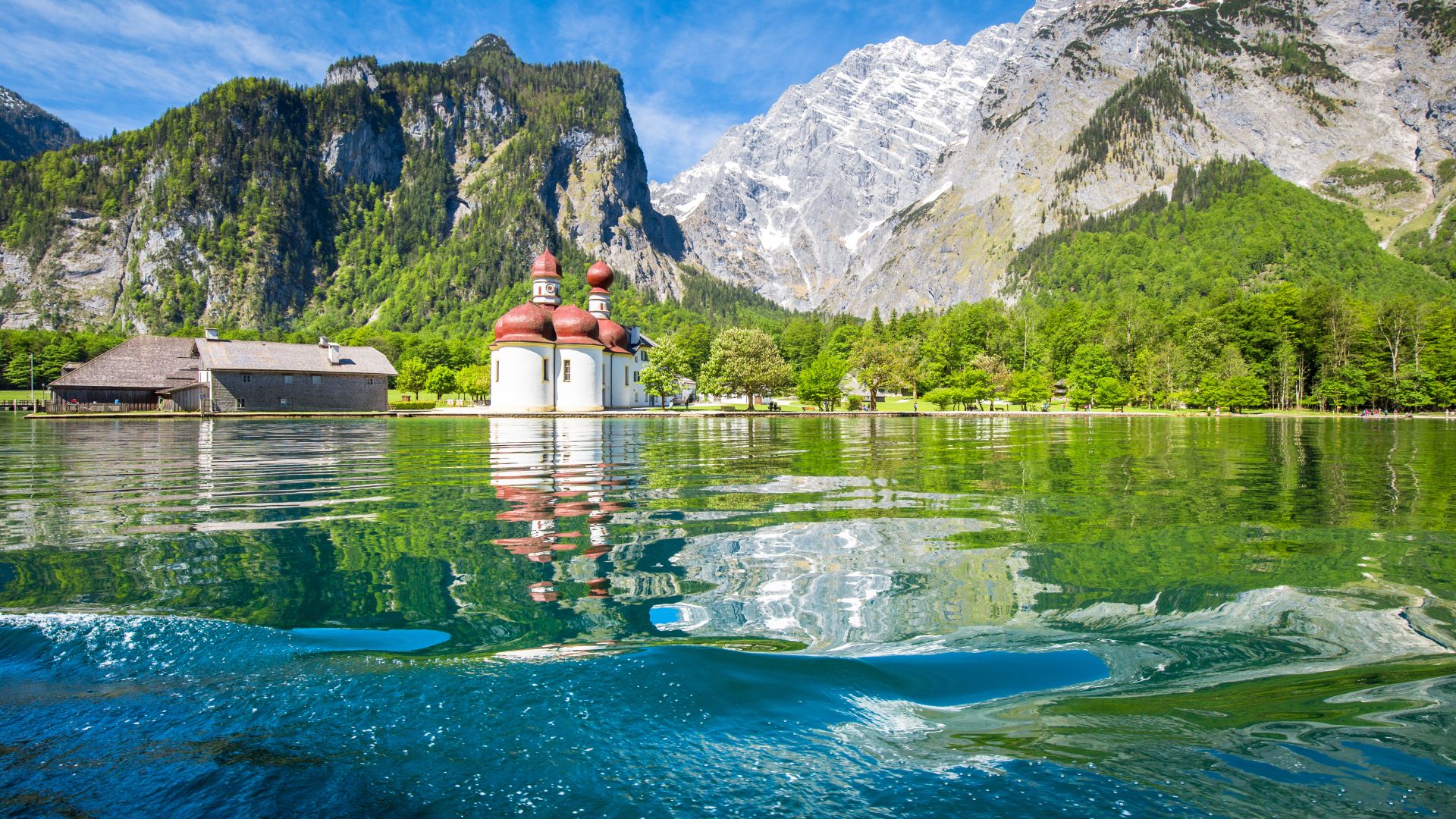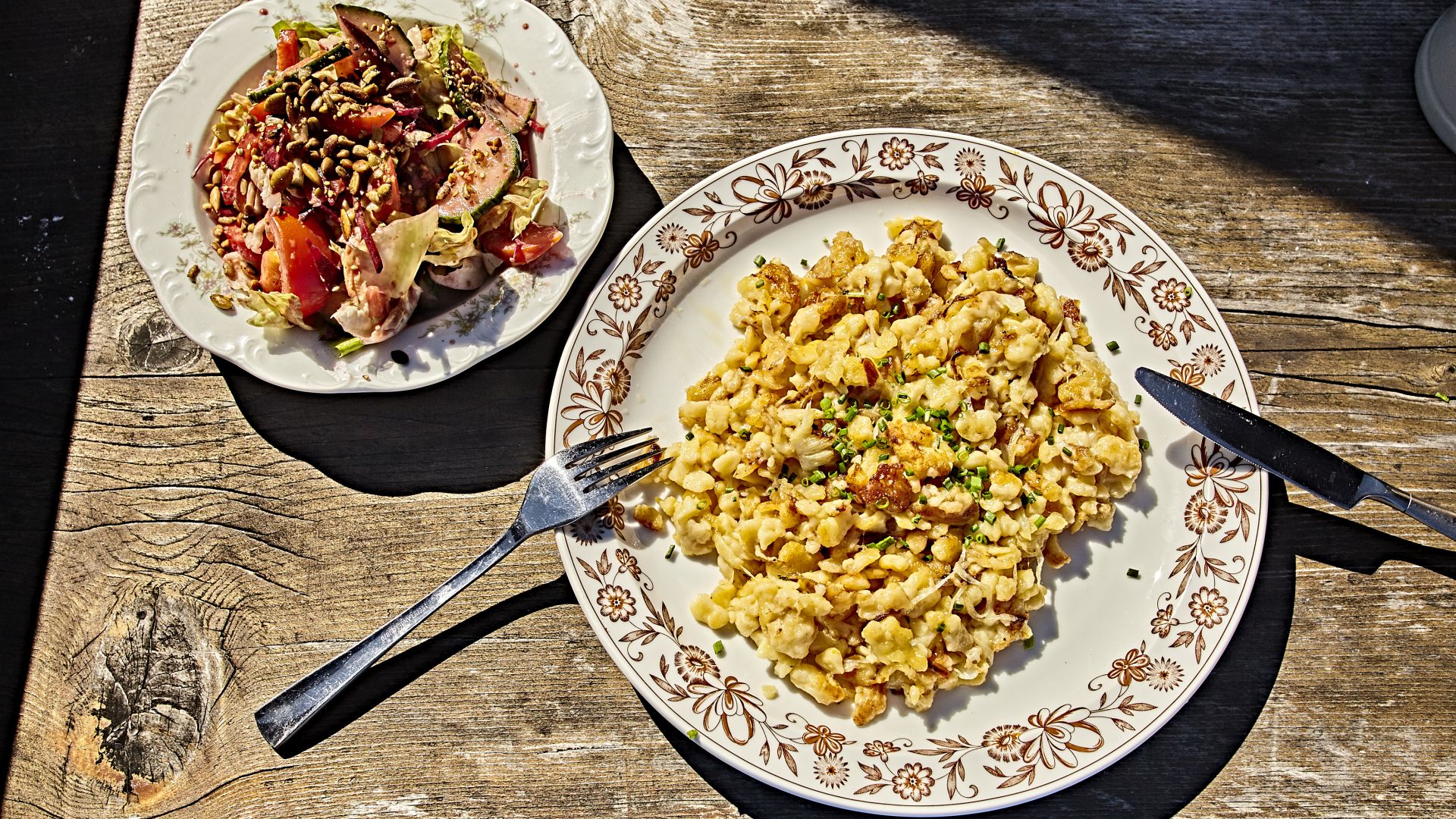Inspiring Germany
The Alps: wanders; wonders; world culture
Gentle landscapes at the foot of the Alps, impressive two-thousand-metre mountains, traditional Alpine inns, world famous castles and traditions that are alive and well. The Alps inspire nature lovers, activity-orientated holiday-makers and connoisseurs alike.
'The mountains are silent masters and make silent disciples,' wrote Ludwig Thoma, who spent his whole life in their vicinity. Anyone who hikes through the Alps will sense this quiet strength – for instance, as roots crunch beneath their shoes, and when the morning mist hovers like a veil above the meadows. The sight of cows on an Alpine pasture, the aroma of hay wafting across. Or when you cool your feet after a hike and the evening sunshine bathes the summits in a vibrant red. At times you are lost for words here – which is probably just what Thoma meant…
Between Lake Constance and Königssee a mountainscape unfolds, which provides the gift of tranquil, joyous moments as much as it triggers goosebumps too. Sometimes your heart races – for instance on the spectacular Alpspix, where, beneath the glass panels, there is a dizzying 1000-metre drop to the ground below. Or on the Wendelstein, the mountain viewpoint steeped in tradition in the Mangfall range, inspiring visitors for generations. Right at the top of the rankings – both in terms of geography and popularity – is the Zugspitze: majestically positioned at 2962 metres and conveniently accessible by rack railway and cable car, for a relaxed ascent. This is a complete contrast to the Watzmann, number three after the Zugspitze and the Hochwanner: at 1,800 metres, the highest rock face in the Eastern Alps requires real climbing expertise and endurance. The famous Watzmann ridge crossing requires strength and courage too – although anyone who tackles this challenging ridge will experience an incomparable feeling of elation and pride at having conquered a true piece of Alpine legend.
Super birds, superb excursion destinations
 Bearded vulture in the Allgäu Alps
©Adobestock (Basti Heckl)
Bearded vulture in the Allgäu Alps
©Adobestock (Basti Heckl)
Many mountain summits promise such joy, including the Hochkalter in Berchtesgaden National Park, which is well-known, not least for being Germany's first mountaineering village Ramsau, and for reintroducing the bearded vulture. Europe's largest bird of prey rightly belongs to the Big Five of the Alps. The others are the golden eagle, ibex, marmot and chamois, which are frequently spotted by hikers, as well as gentian, Alpine roses and wild orchids. There are countless opportunities available thanks to the thousands of kilometres of hiking trails, for every ability level.
Popular routes can span several days (complete with overnight stays in Alpine lodges), for instance through the Ammergauer, or the Salzalpensteig through the Chiemsee and Berchtesgaden Alps. Sublime destinations are reached in just a few hours, among them Neureuth and Brauneck, excursion destinations close to Munich. Something of an insider tip is Germany's biggest ice cave on the majestic Untersberg, where the famous 'Huberbuam' brothers have set up attractive climbing routes. This theme really is soaring, not least thanks to the numerous via ferrata routes. Alpspitz Ferrata, the Mindelheim via ferrata in the Allgäu and others are alluring, with their elevated passages, superb views and secure steel wire ropes.
So many lakes that are well worth a visit!
 Schönau: View of the pilgrimage church of St. Bartholomä on Königssee lake
©Adobe Stock (JFL Photography)
Schönau: View of the pilgrimage church of St. Bartholomä on Königssee lake
©Adobe Stock (JFL Photography)
Packs of cyclists, one to two rows deep, flit along the Isar, Inn and the Salzach, often on mountain-bikes, striving to reach the dizzy heights – whether in the Karwendel, whose steep faces are reminiscent of the Dolomites, the Oberjoch Pass, which has the most winding road in Germany, with 106 twists and turns, or the route heading up to the Hochgern. There, your gaze is drawn on one side to the Alpine divide and on the other, to the fantastic Chiemsee. Wow!
At any rate, there are no shortage of lakes on the fringes of the Alps, among them the fjord-like Königssee, chic Lake Tegernsee, Staffelsee and its seven islands, and the warm Waginger See. Most of them tempt you to enjoy a lap around them, or go (sun)bathing; many have options to enjoy kayaking, SUP-ing or diving, including Walchensee. At others there is even the chance to go sailing, such as Lake Ammersee and Lake Starnberg.
The Alps enjoy taste and tradition!
 Hündeleskopfhütte in the Allgäu Alps
©erlebe.bayern (Gert Krautbauer)
Hündeleskopfhütte in the Allgäu Alps
©erlebe.bayern (Gert Krautbauer)
It is a well known fact that food tastes particularly good during, and after, a tour. Whether it's a piece of bread or Alpine mountain cheese, roasted ham hock with a wheat beer or some cheese 'Spätzle' (noodles) – cuisine in the Alps is a blend of tradition and hearty, robust food. In the many Alpine lodges and mountain inns, guests also get to enjoy 'Leberkäse', dumplings, fresh river trout, along with classic desserts including apple strudel and 'Kaiserschmarrn' pancakes.
What makes the mountains delectable, too, are the dozens of castles, churches and stately homes. Neuschwanstein is inconceivable without its mountain backdrop, so too the Rococo gem, Wieskirche. As well as these, Schloss Hohenschwangau and the Falkenstein castle ruins provide insights into history, architecture and the traditions of the German nobility. And it isn't just ski legend Markus Wasmeier's Open-Air Museum that recounts artisan crafts and life in the mountains. The culture of the Alps is revealed in particular on the streets and plazas when (brass band) musicians play and 'Schuhplattler' dance at village festivals. And during the mountain masses, mountain fires and the Alpine cattle drives in later summer. These events inspire locals as much as they do visitors, and make it evident that the Alps are much more than just mountains. They are a region, where nature tradition and culture fuse in a unique way.